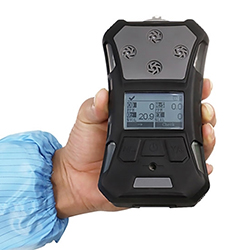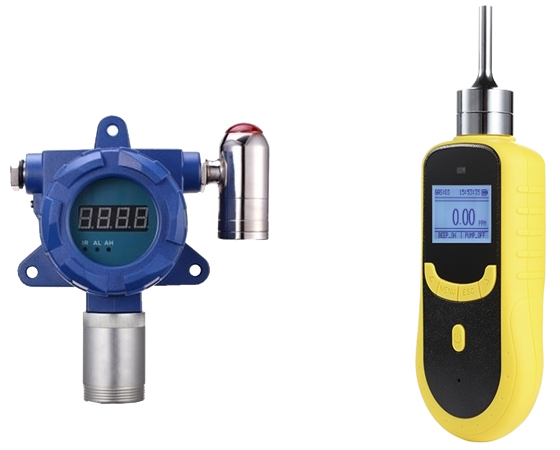Gas Detector Buying Guide
Gas detectors are usually used to detect toxic, harmful or flammable gases. Toxic gas detectors are generally used in biochemical, pharmaceutical, construction and other industries, while combustible gas detectors are often used in coal mines, petroleum, chemical, fuel and other industries. With the rapid development of the industry, the monitoring of gas in the environment is essential, so how should we choose a gas detector? At present, there are portable gas detectors and fixed gas detectors provided by manufacturers and supplies. These two types of gas detectors are divided into 1 in 1, 2 in 1, 4 in 1 and other specifications, and these products with different specifications have different application functions for gases. The detection standards for different industries and occasions are different, and the detection standards for different gases are also different. When choosing a good gas detector, pay attention to the use of the instrument according to the purpose and occasion of use.
How to select a right gas detector?
It is necessary to determine the type and concentration standard of the gas to be detected.
The gas to be detected in different environments is different. Before choosing which gas detector, you must first determine what kind of gas is to be measured, what is the suitable concentration range of this gas, and even consider all possible situation that will occur. For example, in an environment with more methane or other less toxic alkane gases, choose a LEL detector. For environmental testing of toxic gases such as CO and H2S, it is necessary to ensure the personal safety of the tester and the staff in the environment, so choose a specific gas Detector. For chemical environments with more organic harmful gases (such as aromatic hydrocarbons, ammonia, etc.), a photoionization detector must be selected, which can not only obtain more accurate test results, but also avoid the use of LEL detectors. the possibility of casualties. If the environment may be mixed with various gases, then it is most appropriate to choose a multi-type detector, such as ATO 5-gas explosion-proof multi gas detector.
The applicable occasions of different detectors should also be considered.
The fixed gas detector is a relatively common detection instrument used in industrial production and installations. It is an instrument installed at a fixed monitoring point to detect a fixed gas. The gas monitoring is completed by circuits, sensors and alarm devices. And select the height position of the sensor installation according to the density of the gas. Portable gas detectors are light and small in size, easy to carry, and can be easily carried to different environments. Since their power supply is powered by alkaline batteries, their working time is longer, so their applications are becoming more and more extensive.
For example, in some industrial production or storage positions that run for a long time, a fixed gas detector can be used for the detection of toxic gas leakage and harmful gas. Portable instruments are used for other special gas detection in other industries, such as emergency gas detection in underground tunnels, combustible gas detection and patrol detection.
What gases can ATO gas detectors detect?
ATO series gas detectors are divided into fixed gas detectors and portable gas detectors, which can detect Ammonia (NH3), Hydrogen Sulfide (H2S), Chlorine (Cl2), Hydrogen (H2), Nitrogen (N2), Ozone (O3) , carbon monoxide (CO), etc. They are high quality and at factory price.

Why invest in ATO gas detectors?
- ATO gas detector uses high precision and high stability sensors that can be freely combined and flexibly configured to achieve the function of simultaneous measurement of multiple gases.
- Handheld gas detector adopt PPM, mg/m3, %VOL, %LEL gas concentration units, which can be freely switched according to the choice.
- The use of ultra-high decibel buzzer alarm, vibration power prompt, four lights flashing. Triple alarm, safe and reliable, high and low secondary alarm values can be set by yourself.
- With real-time gas concentration curve drawing function, it is convenient to check the changes of gas concentration in the recent period of time.
- With password management function, important operations require password verification to effectively prevent misoperation.
- The use of large-capacity lithium polymer rechargeable batteries can ensure that the instrument can work continuously for a long time; the battery power is displayed in real time; it has its own charging prompt and undervoltage prompt function.
- With data storage function, you can view historical data on the instrument, or connect to a computer to export data, print and compare, and observe data changes.
- Comes with sturdy and high-grade all-stainless steel alligator clip, strong corrosion resistance, sturdy and durable, and easy to carry during operation.
- ATO gas detector comes with a high-strength and high-hardness special engineering PC plastic standard gas cover, which has the function of waterproof and dustproof, and can also be used for gas calibration.
- The lower shell is made of high-strength and high-hardness special engineering PC plastic, which has strong flame retardancy, wear resistance, and fatigue resistance. The appearance is beautiful and fashionable. Waterproof and dustproof function.
- The upper shell is made of full low carbon austenitic stainless steel after pickling, annealing, cold rolling and other processes. It has excellent corrosion resistance, strong durability, good cleanliness and durability. Small and light, easy to carry, it is most suitable for multi-component occasions such as emergency rescue, disaster disposal, atmospheric environment monitoring, analysis of special pollutants in parks, vehicle exhaust emissions, and boiler flue gas analysis.

